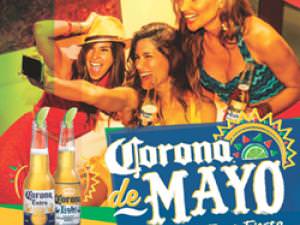The things we forget after Cinco de Mayo easily outrank the things we know about the holiday. Really, the fact that Cinco de Mayo is automatically associated with drinking is already evidence that we’re doing it wrong.
Not that we have the capacity, or necessarily the impetus, to shut down the biggest drinking holiday of the year. But considering how far Cinco de Mayo celebrations stray from the actual historical and cultural origins, we figured we could do a little refresher course on everyone’s favorite excuse to put a bunch of Coronas in a bucket.
Seriously, it’s worth your time to read a bit about the historic intensity and military bravery that actually constitute the groundwork for the holiday. And then, yes, read about how a macro beer marketing campaign would basically turn that holiday into an annual cash cow.
Again, we’re not trying to dispel any of the fun of the holiday. We’ll readily take any excuse to drink a nice cold lager and eat copious amounts of Mexican food. But once you reach a stage of total ignorance or serious cultural adulteration, the holiday’s misguidedness kind of cancels out any of the fun. We figure we can arm ourselves with a bit more knowledge, and probably a few bottles of water, and get more out of the holiday than that rough-looking Corona bloat.
Cinco de Mayo isn’t Mexican Independence Day.
It’s actually the anniversary of a surprise Mexican victory in the Battle of Puebla (the French had come after them for some debt and some other stuff, but we’ll get to that). Mexican Independence Day is September 16th, and it’s a much bigger holiday, celebrated with nationwide parades and military exhibitions, not Margarita machines.
Cinco de Mayo is a historic celebration.

It marks the Battle of Puebla, basically when France came callin’ for money owed (Mexico had suspended payment of all foreign debt, which can tend to piss other countries off). In truth, France also came to establish a stronghold in Mexico as they continued their support for the Confederacy—yep—in the American Civil War. And that connection will matter later…
The Mexican army were kind of like Spartans.
Mexican forces were totally outnumbered by the invading French in the Battle of Puebla, but still they fought bravely. Kind of like how a small Spartan army of 300 men stood against maybe 100,000 invading Persians in the Battle of Thermopylae, roughly 2300 years before. (Only difference: Mexicans won their battle.)
Cinco de Mayo was most important in Puebla, not Mexico.
Most Mexican states didn’t hold big Cinco de Mayo celebrations—and not just because the French did eventually take over. It was more a personal victory for the city of Puebla, celebrated locally. However…
Cinco de Mayo did become important in the United States, but not as a party.

Though the reasons are entirely disparate. Cinco de Mayo started to pick up in the U.S. alongside the Chicano Civil Rights Movement of the 1960s, which sought to create greater ethnic solidarity and equal rights for Mexican Americans. The movement was far larger in scope, and included events like the historic Delano grape strike, but Cinco de Mayo was an important way for larger Mexican American communities (in states like Texas and California; see the top image for a recent celebration in San Diego). The goal was to not only maintain cultural tradition, but stake a (rightful) claim in American history: Mexicans beat the French in the Battle of Puebla, weakening their forces and thus their support of the Confederacy. If you’re talking about ground zero contributions, there’s one.
Then there was the whole cultural capitalization thing.
True, Mexican Americans were in a period of cultural evolution and strengthening, which is one reason why Cinco de Mayo became an important symbolic holiday in the U.S. But there’s no holiday that can’t be corrupted by a little marketing, right? Which is why we now associate Cinco de Mayo with Corona, who saw the holiday as a chance to market a sh*t ton more beer. In 1989, the Gambrinus group (which at the time owned Grupo Modelo and Corona) launched an ad campaign which basically capitalized on ideas of reclaiming ethnic identity, encouraging Mexican Americans to drink Corona as a means to stay culturally connected.
Except Corona is, and isn’t, “Mexican beer.”
Which is to say, beer production in Mexico was largely influenced, and driven by, European immigrants, including temporary 19th, Emperor of Mexico Archduke Ferdinand Maximilian, who built his own brewery in the country (before being ousted and executed by Benito Juarez). European influenced styles (e.g. the light lager style of Corona) came to be associated with Mexico, and eventually, Cinco de Mayo.
Speaking of Corona, there was once a rumor Corona had urine in it.
Apparently, Mexicans weren’t really drinking a ton of Corona in the 1980s (they’d been producing it since the 1920s). There was a rumor that Corona actually contained pee—which maybe shouldn’t surprise, as there was also once a rumor pulque contained feces. The Cinco de Mayo marketing campaign may also have been the Gambrinus group’s way of addressing slumping sales. It worked, because now…
Corona is the #5th best selling beer in the United States.

And a lot of that has to do with annual Cinco de Mayo sales. Advertising begins weeks before the actual holiday. And while some of that advertising is slightly tamer, some of the advertising has been shamelessly stupid.
Other macro beers tried to get in on the game with busty ads.
And we’re not entirely certain, but pretty sure that is Nadine Velazquez in the background, aka Sofia from “The League”?
There is a ‘Cinco de Drinko’ baby onesie.
This has less to do with the holiday and more to do with what god awful things can be done with a holiday. “I would never dress my baby in a Cinco de Mayo onesie. Unless it was made with organic cotton, that is.”
